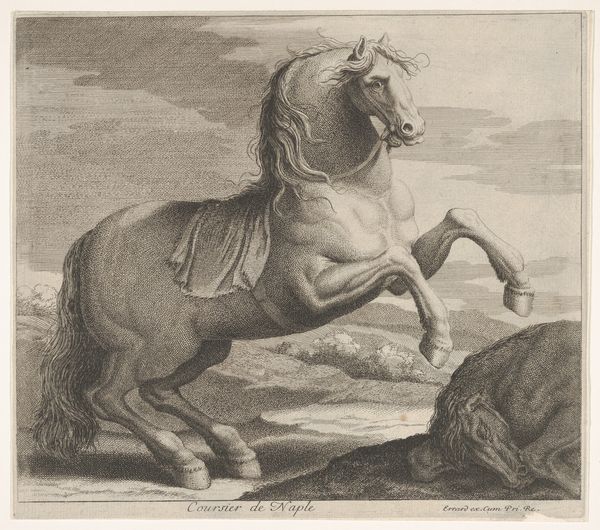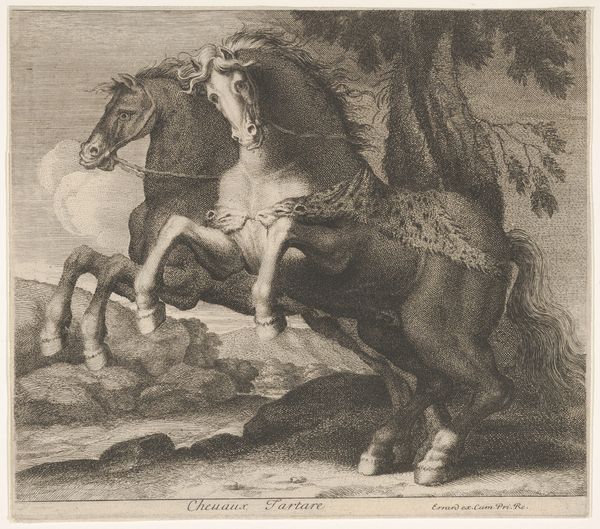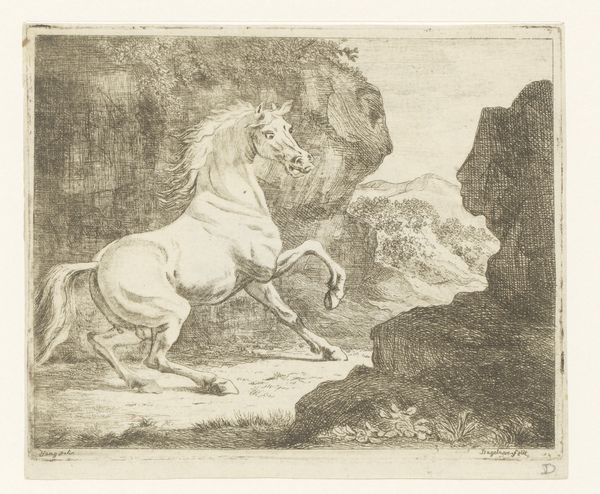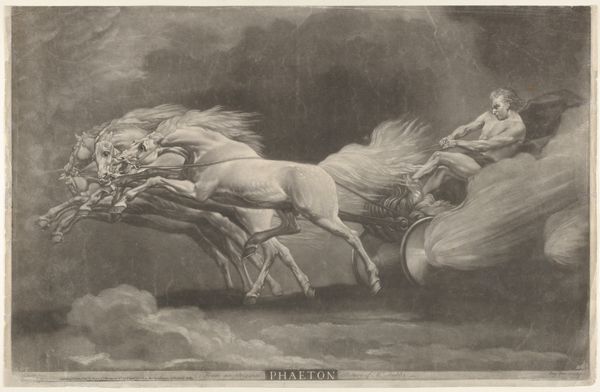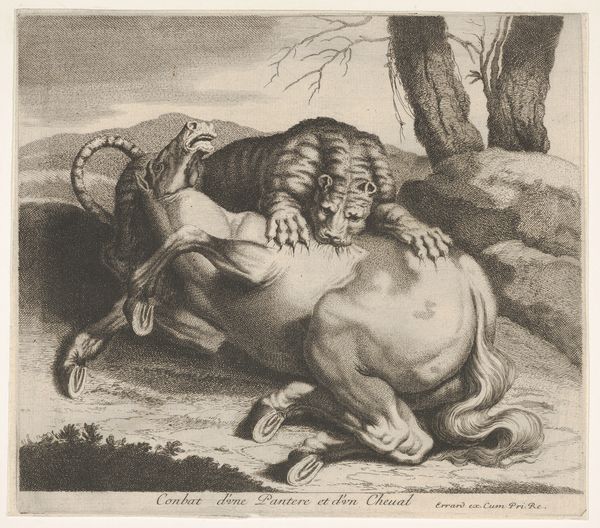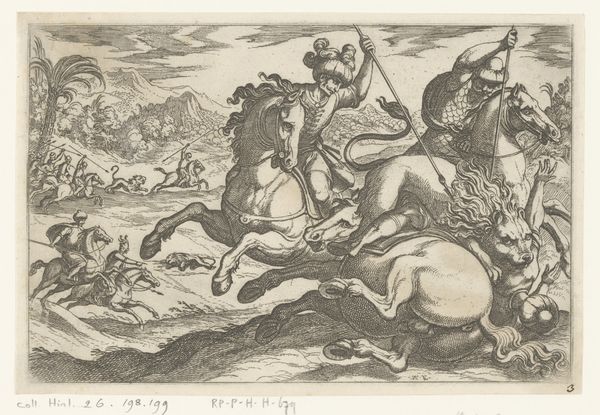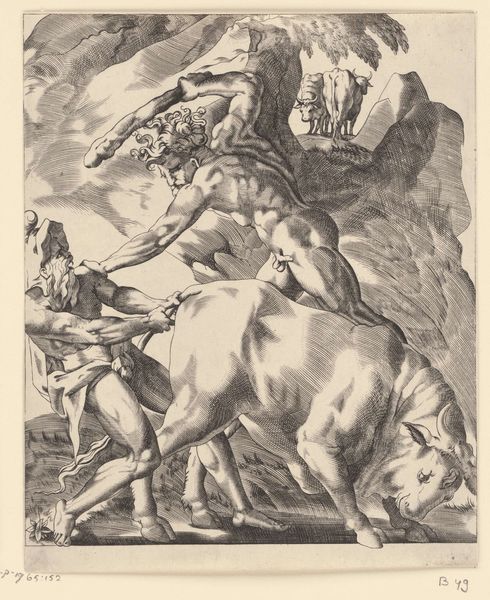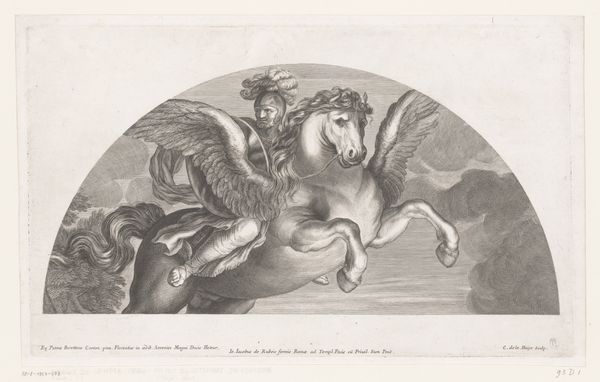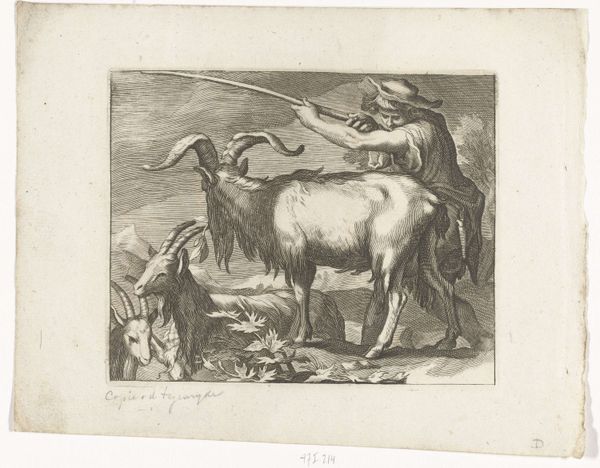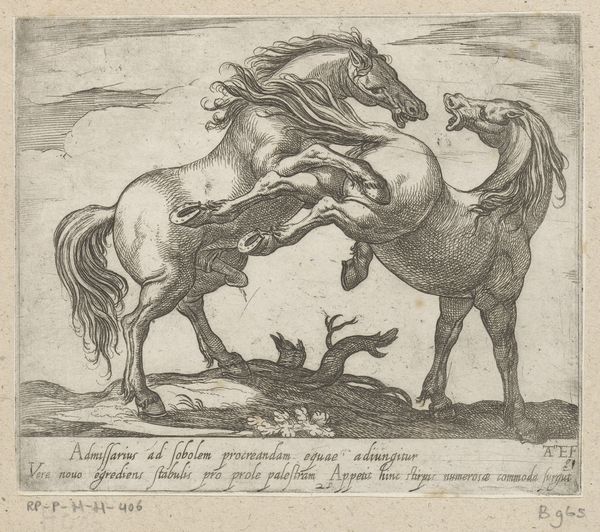
drawing, print, etching, engraving
#
drawing
#
baroque
#
animal
# print
#
etching
#
landscape
#
horse
#
engraving
Dimensions: image: 8 1/4 x 9 3/16 in. (21 x 23.4 cm)
Copyright: Public Domain
Charles Errard the Younger made this engraving of two horses, titled ‘Chevaux Poulonnois’, sometime in the 17th century. This print reflects the cultural values of the French court, a setting where the equestrian arts were admired and lavishly supported. Errard, a painter, architect and printmaker, was the director of the French Academy in Rome. Founded in 1648, the Academy fostered a classical style but also served as a center of French cultural diplomacy. Errard’s image presents the horse as a symbol of power. The rearing pose recalls equestrian portraiture popular with royalty and nobility, while the tiger skin may allude to the exotic luxuries cherished by the French elite. The print thus showcases the artist's classical training, but it also reinforces existing social hierarchies. To delve deeper into Errard's world, scholars consult period documents like royal inventories, academy records, and collections of prints and drawings. Such resources illuminate the intersection of art, power, and cultural exchange in early modern France.
Comments
No comments
Be the first to comment and join the conversation on the ultimate creative platform.
